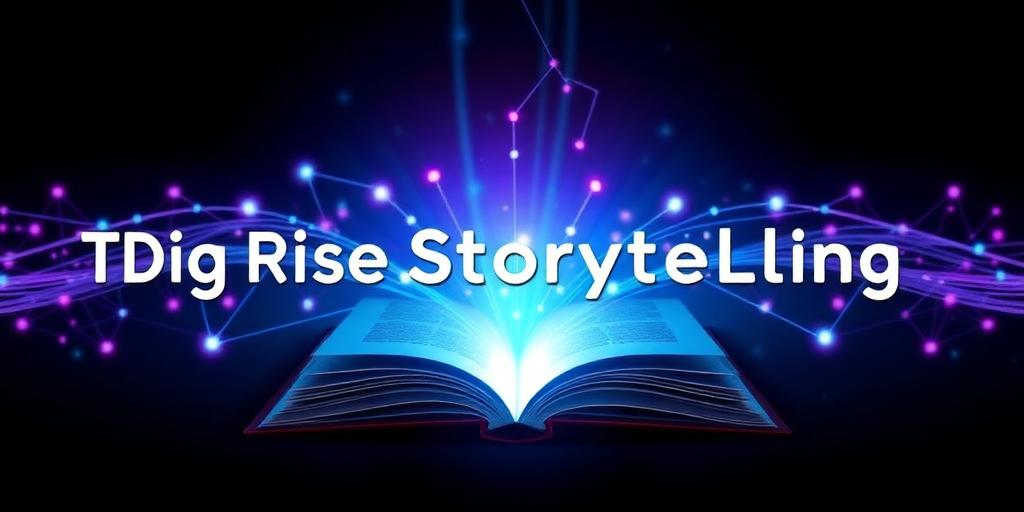The Rise of Digital Storytelling: Crafting Compelling Narratives in the Modern Age
In an increasingly interconnected world, the traditional methods of conveying narratives have undergone a profound transformation. What was once confined to printed pages, stage performances, or linear broadcasts has evolved into an expansive, dynamic realm: digital storytelling. This paradigm shift represents more than just a change in medium; it signifies a fundamental reshaping of how stories are conceived, consumed, and interacted with. The ascendancy of digital platforms has presented unprecedented opportunities for creators to engage audiences with richer, more immersive, and highly personalized experiences.
The Evolution from Traditional to Digital Narratives
Storytelling is an innate human endeavor, a means of transmitting knowledge, culture, and emotion across generations. Historically, this primarily occurred through oral traditions, written texts, and eventually, static visual and audio formats. However, the advent of the internet and the proliferation of digital devices fundamentally altered this landscape. The transition was not merely about digitizing existing content but about enabling new forms of narrative expression. The evolution of digital narratives is characterized by:
- Non-Linearity: Unlike traditional narratives that follow a fixed path, digital stories often allow for branching pathways and audience choice, creating a unique journey for each viewer.
- Interactivity: Audiences are no longer passive recipients but active participants, influencing plot developments, exploring environments, or contributing content.
- Multimedia Integration: The seamless blending of text, images, video, audio, animation, and interactive elements creates a more sensory-rich experience.
- Global Reach: Digital platforms erase geographical boundaries, allowing stories to reach a worldwide audience instantly and facilitating cross-cultural exchange.
Key Pillars of Modern Digital Storytelling
Effective digital storytelling hinges on several core components that differentiate it from its traditional counterparts:
-
Rich Multimedia Content
The judicious integration of various media types is paramount. A compelling digital narrative leverages high-quality visuals, evocative soundscapes, and engaging video clips to enhance the textual component. This holistic approach ensures that the story appeals to multiple senses, creating a more memorable and impactful experience for the audience. Mastery of these elements is crucial for impactful digital content creation.
-
Audience Engagement and Interactivity
Perhaps the most defining characteristic of digital storytelling is its emphasis on interaction. This can range from simple clickable elements to complex narrative choices within an interactive film or game. By empowering the audience to participate, digital stories foster a deeper connection and a sense of ownership over the narrative. Understanding user behavior and designing intuitive interactive elements are key to successful audience engagement.
-
Personalization and Customization
The ability to tailor a narrative to individual preferences or historical interactions elevates the storytelling experience. Data-driven insights can enable dynamic content delivery, ensuring relevance and resonance with specific audience segments. This level of personalization strengthens the bond between the content and the consumer, making the experience feel uniquely curated.
-
Platform Optimization
A successful digital story is inherently designed for its intended platform, whether it be a social media feed, a dedicated website, a virtual reality experience, or a mobile application. Understanding the affordances and limitations of each platform is essential for maximizing reach and impact. Optimizing for diverse viewing environments ensures accessibility and consistent quality.
Impact Across Industries
The influence of digital storytelling extends far beyond entertainment, fundamentally reshaping strategies across various sectors:
- Marketing and Branding: Brands leverage compelling digital narratives to build emotional connections with consumers, conveying values and product benefits in an authentic, engaging manner. This moves beyond traditional advertising to create brand loyalty.
- Education: Interactive learning modules, virtual field trips, and gamified content make complex subjects more accessible and engaging for students, enhancing retention and critical thinking skills.
- Journalism: Explanatory journalism utilizes multimedia to provide depth and context to news stories, allowing audiences to explore data visualizations, timelines, and interviews interactively.
- Healthcare: Digital narratives are employed for patient education, adherence programs, and destigmatizing health conditions, often through empathetic and relatable personal stories.
The Future of Interactive Content and Digital Narratives
The trajectory of digital storytelling points towards even greater immersion and sophistication. Technologies such as virtual reality (VR), augmented reality (AR), and artificial intelligence (AI) are poised to redefine the boundaries of narrative creation. Imagine AI-driven characters that adapt to audience input or VR experiences that transport viewers directly into the heart of a story. The continuous evolution of digital narratives will increasingly blur the lines between creator and audience, fostering an era of co-created and infinitely variable storytelling experiences. The future promises a rich tapestry of interactive content that challenges traditional narrative structures and prioritizes personalized, immersive engagement.
Conclusion
The rise of digital storytelling is not merely a technological trend but a cultural phenomenon that underscores humanity's enduring need to connect through shared experiences. By harnessing the power of multimedia, interactivity, and personalization, creators are unlocking new dimensions of narrative potential. As technology continues to advance, the capacity for crafting compelling narratives in the digital age will only expand, offering unprecedented opportunities to inform, persuade, and inspire audiences globally. Embracing these evolving methodologies is imperative for anyone seeking to communicate effectively in the 21st century.









